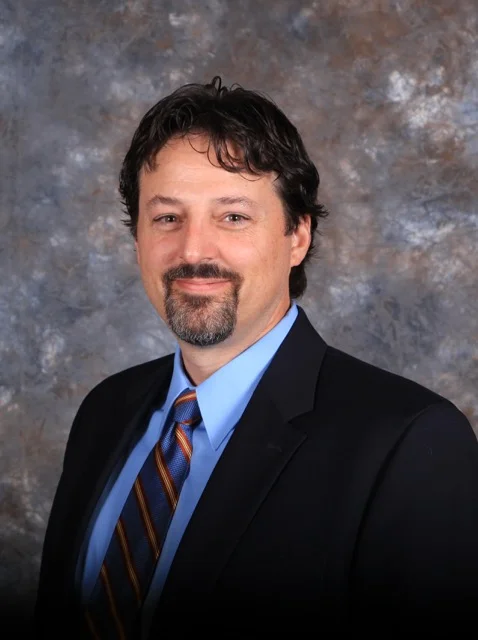The College of Southern Idaho (CSI), a two-year community college in Twin Falls, Idaho, prides itself on offering a quality education at the lowest tuition rate in the state. It aims to prepare its students for jobs with surrounding businesses, such as manufacturing positions in the world’s largest yogurt factory or nursing jobs with area hospitals and doctors’ offices.
Keeping tuition low for its 9,000 students means CSI doesn’t have the kind of large budgets that enable some other schools to experiment with technologies such as virtual reality. But Kevin Mark, who joined CSI as its chief technology officer in late 2015, relishes the challenge, saying it forces the school to get creative in how it uses technology to meet its goals.

The Enterprisers Project (TEP): How are you preparing CSI to take advantage of emerging technologies?
 Mark: Anything to do with innovation starts with a stable digital foundation and competency in IT operations. If you can’t do existing things well, it’s a recipe for disaster to try to do something new and different. An organization needs operational maturity and discipline in three critical areas: support, project execution, and the way they define measurable outcomes. That’s what we’re focused on now. We’re incorporating ITIL concepts, including IT Service Management for all IT operational components: incident management, change management, the whole cycle of different phases. That’s been our focus over this last year and it’s proven to be hugely successful. We’ve been able to track how much work we’re responsible for and reveal some gaps where we need to do better. Before we didn’t have any data to give us that insight, just speculation and opinions.
Mark: Anything to do with innovation starts with a stable digital foundation and competency in IT operations. If you can’t do existing things well, it’s a recipe for disaster to try to do something new and different. An organization needs operational maturity and discipline in three critical areas: support, project execution, and the way they define measurable outcomes. That’s what we’re focused on now. We’re incorporating ITIL concepts, including IT Service Management for all IT operational components: incident management, change management, the whole cycle of different phases. That’s been our focus over this last year and it’s proven to be hugely successful. We’ve been able to track how much work we’re responsible for and reveal some gaps where we need to do better. Before we didn’t have any data to give us that insight, just speculation and opinions.
The other piece is project management. We’re in the process of standing up a project management office within the IT department which will handle all service requests and help us manage major initiatives in a cohesive way. IT partners with stakeholders to build formal business case proposals for their project requests, which allows us to capture more definition around what problems projects solve, what the risks are, expectations for deliverables, scope of work, and so on. It’s really starting to have a positive influence in helping CSI think about technology as part of how they’re going to fulfill their mission.
TEP: What’s the process you use to decide which technology initiatives to tackle?
Mark: It has to begin with the business strategy, understanding the key challenges and most pressing problems facing the institution, then working back to figure out how to apply an IT solution to address those challenges. We also have steering committees with faculty and instructional councils, which are great avenues for those kinds of conversations.
TEP: What are some of the projects you’ve identified thus far?
Mark: We’re getting ready to implement a completely redesigned web architecture. It’s one of the largest investments CSI has made in a single software initiative at one time. That was a major fork in the road moment for CSI, to make that financial commitment and recognize the significance of web technology in helping run our operations. I’ve heard folks ask, “Why spend this much for a website?” Well, it’s not a website. It’s student recruiting, it's student registration, it’s the way students submit their application for enrollment, it’s how they track their progress toward graduation. That’s completely different from just putting up a nice, pretty website. These capabilities are at the heart of what we’re here to do. That’s the kind of conversation that goes on and we’re able to be part of those discussions with key stakeholders to help them see, “Oh, this isn’t just installing a bunch of software; this is changing how we do things in a way that’s going to better serve students and communities.”
We’re also trying to stabilize our core operations, moving past break/fix support to proactively engaging department heads on their three-to-five-year plans. We’re trying to get in front of these requests, to position ourselves in such a way that we can respond and execute rapidly. Given our budget, we are constrained a bit in what we can do, which I think is a good thing because it forces us to be more creative in how we solve problems. We can still achieve excellence in everything we do, and we can do it with what we have. It makes us be more intentional. Our best chance at being successful is equipping ourselves so we can respond in a thoughtful, intentional way. That’s how I see us answering the larger question about how we approach emerging technology – to position ourselves so we can respond well.




Comments
Excellent article. And what a great CTO. Way to go Mark! I can't think of a more challenging environment to work in than a college campus. CSI has got the right kind of man at the helm for this one. Keep up the good work.